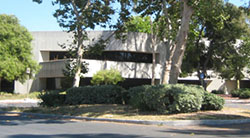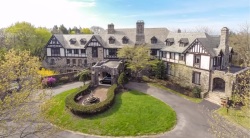
Many American students are gifted and talented, but the country’s educational system fails to serve many of them, especially those high-ability young people who come from disadvantaged and minority backgrounds. This failure limits their upward mobility and keeps them from contributing more to the nation’s intellectual and economic growth. There has long been a suspected gifted gap between the educational support for upper and middle-class students, and the support for minority students and those from lower income families.
There is a tendency in our nation’s schools to pay more attention to students who are struggling. Not as much time or effort is given to gifted students. There is little encouragement given to participating in talented programs, and this contributes to lower involvement, especially for minority or disadvantaged students.
Research Confirms Gap in Disadvantaged Gifted Students
A recent study by The Equality of Opportunity Project supports the gap theory, finding that many gifted students become lost in the educational system. The researchers call them “lost Einsteins,” many of whom come from disadvantaged backgrounds.
The study was conducted by Alex Bell, Raj Chetty, and colleagues. They found that math scores in third grade can be used to predict which students will be awarded patents later in life. These are the students they call “Einsteins.”
Researchers also found that, at this third-grade level, all gifted students seem to be relatively equal, although there is some gap between students of different economic backgrounds. But the gap grows wider with succeeding years, suggesting that lower-income students fall behind their higher-income peers in their creative and innovative abilities.
What causes this gap to grow? There are probably several reasons including differences in childhood environment and differences in school program opportunities. The environment can include residential segregation, lack of access to college, less neighborhood innovation, and perhaps less family encouragement. There appears to be less cultivation of giftedness for these students, and they are less likely to use or develop their talents as they grow older.
Enrollments Tell the Story
While many schools claim to have gifted programs in their districts, a closer look reveals that not all of these schools and not all of these programs are fully supportive of students who come from modest backgrounds. According to a Thomas B. Fordham Institute study, fewer of these students actually make it into these gifted and talented programs.
Schools offer these programs, but actual enrollments tell a different story. Schools attended by low-income children report that they have the same programs that schools for more prosperous students have. But enrollment rates show that not as many low-income students take advantage of these programs. Enrollments are lower for these students, and Black and Hispanic students are very under-represented.
The U.S. Education Department’s Office for Civil Rights (OCR) has been collecting data on program enrollments for many years. It asks the schools to provide basic information including enrollment by racial and ethnic groups. The information supports the idea of a gap between middle-class and disadvantaged students.
More research, done by Ohio State’s Christopher Yaluma and Fordham’s Adam Tyner, also reveals that having gifted programs is one thing, but enrollments are another. In their study, Is There a Gifted Gap?, they discuss participation in gifted programs by different ethnic groups.
They found that most schools offer gifted programs at every poverty level and every level of minority enrollment. But students in more affluent schools are more than twice as likely (12.4 percent to 6.1 percent) to participate in these programs than their minority peers. Minority students from high-poverty schools are much less likely to participate.
Closing the Gifted Gap
There is more information needed on gifted programs. How are students selected for them? What is the quality of these programs? What are their characteristics? Improving the programs is a part of improving the opportunities for enrichment for everyone.
Schools can make better use of personalized learning techniques and the growing number of learning programs being developed by third-party educational organizations. Educational technology programs and products for learning are being developed in a competitive landscape, and school systems can evaluate and incorporate them.
Schools with minority populations need to have a more rigorous curriculum, with more and better textbooks, libraries, and access to expanded resources, and the material should reflect the student groups and be relatable. Giftedness in poverty requires that programs should be adjusted to accommodate the experiences and values that are fostered in the culture of poverty, not middle-class.
Schools can do a better job of identifying more high-potential students, especially children of low-income families and/or of color, by encouraging them to participate in gifted programs. All children should be screened to see who would benefit from gifted programs, because universal screening has shown to boost participation of minority and poverty students.
School systems can improve the way they manage gifted programs. It would be better for gifted programs to be administered at each school rather than at the district level. While the standards for identification and participation may vary from school to school, there would be more ethnic and socioeconomic diversity.
The basic tenets of education should be modified to provide as much attention to gifted students as is now given to struggling students. The young Einsteins of the educational system should be given equal opportunity to develop their talents with enrichment programs and acceleration where exceptional talent warrants it.
Struggling students are often advanced to more challenging levels, to the detriment of gifted students. The number of graduate students who took Advanced Placement (AP) exams grew from 1 million in 2003 to 1.6 million in 2008. Only 14% of teachers said the reason was more qualified students.
Gifted students need attention from teachers as much as struggling students do. When surveyed, 60% of teachers responded that struggling students were their top priority, and 23% said their priority was “academically advanced” students. Eighty percent of the teachers said that they would give the most one-on-one attention to struggling students, while 5% said they would give attention to advanced students.
Gifted programs should be mindfully designed to better meet the special needs, strengths, and achievement levels of diverse students. And gifted minority students should be prepared to participate in advanced programs.
There are now,preparatory programs for bright minority or low-SES children to get them ready for advanced and accelerated programs later. These prep programs also protect them from potentially negative peer influences.
These preparatory type programs take different forms, from afterschool programs to weekend or summer school. There has been some growing evidence that these prep programs are successful in having minority students move into advanced and accelerated programs with more confidence.
If everyone involved in education can recognize and agree that there is a gap in our system, maybe they can start to enact more equitable strategies across the board, to give our country a stronger, more representative, intellectual leadership and one worthier of world-class status.






